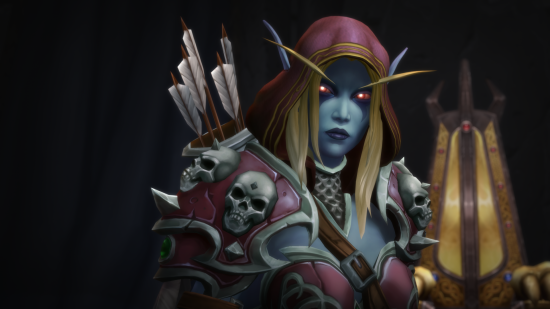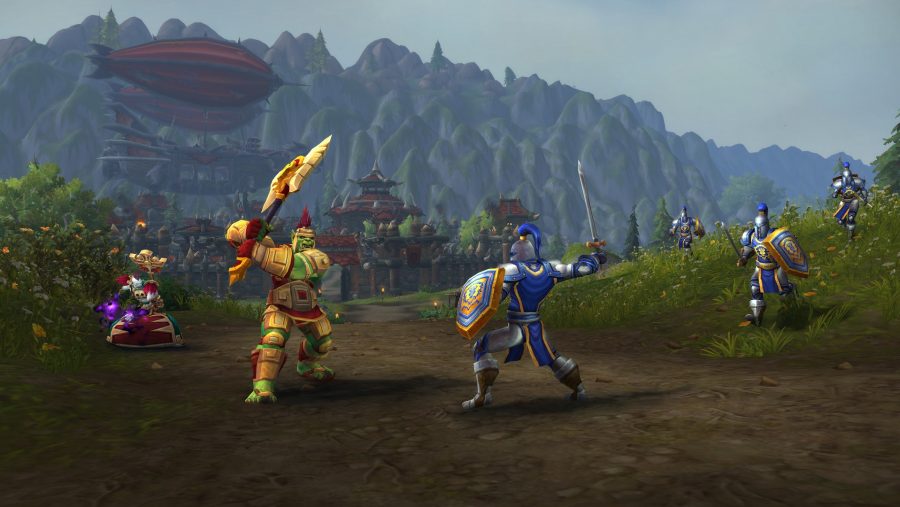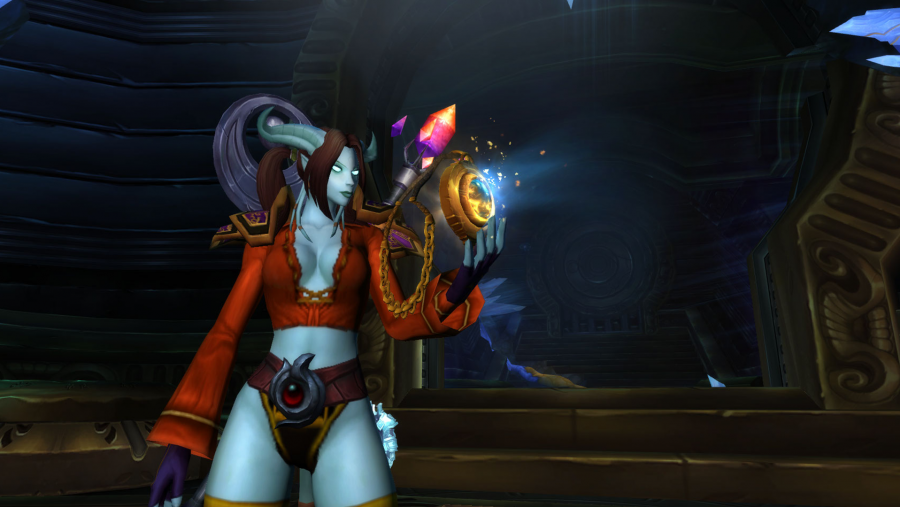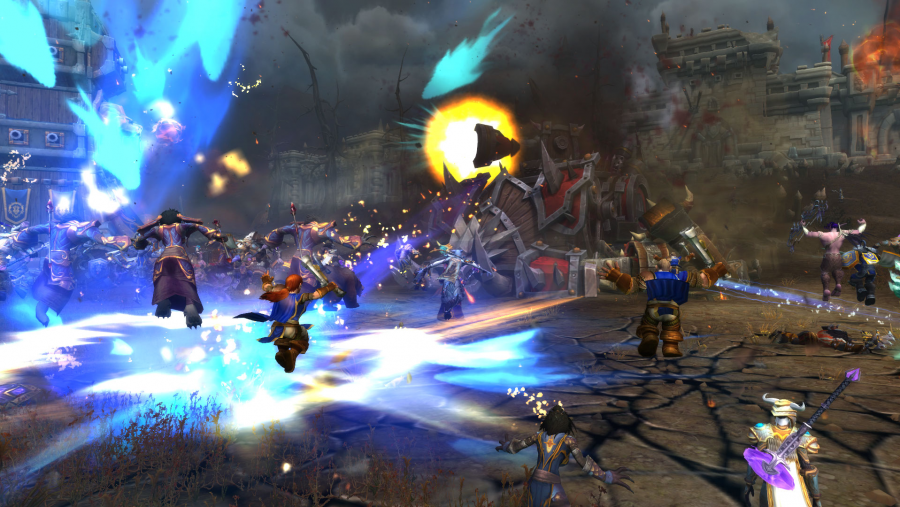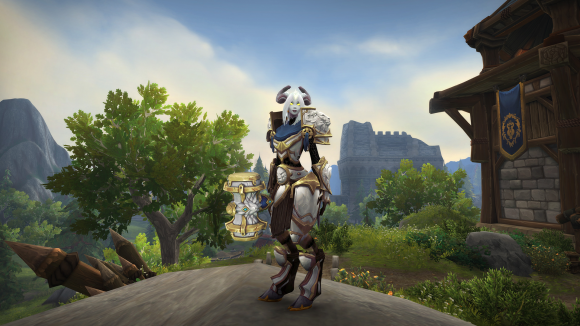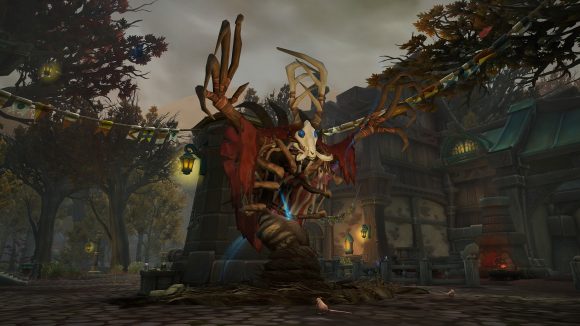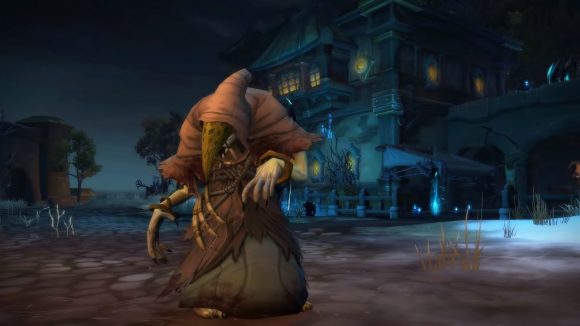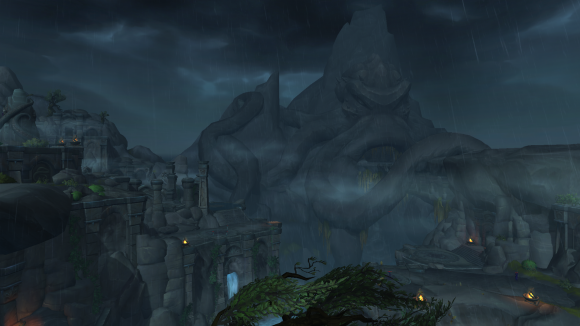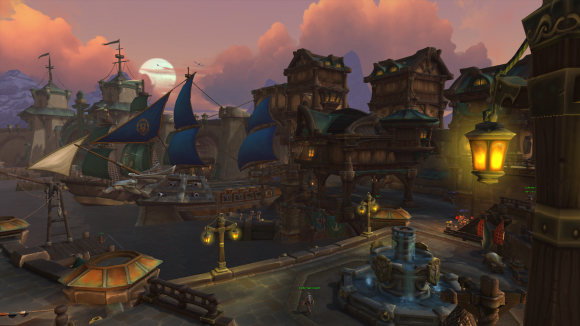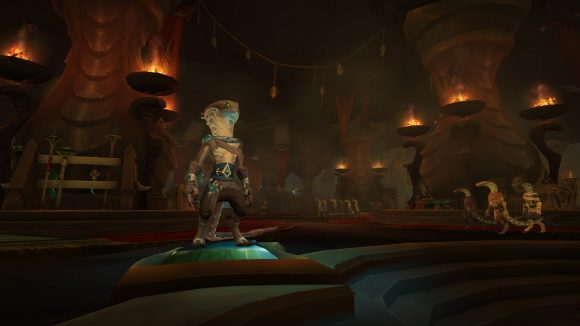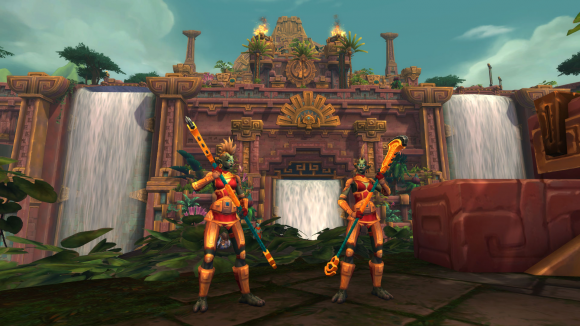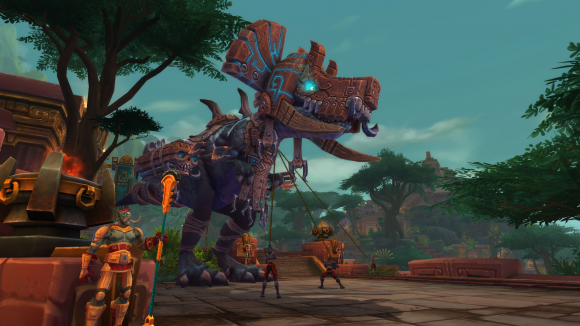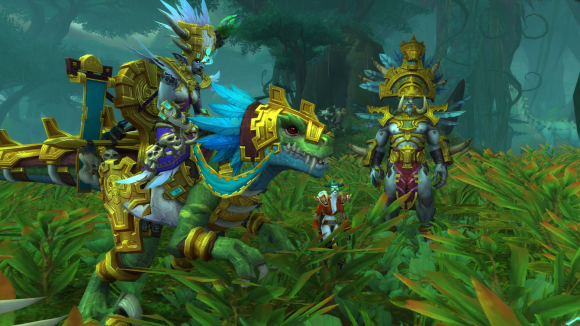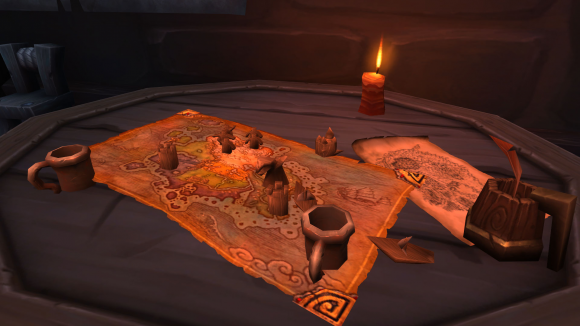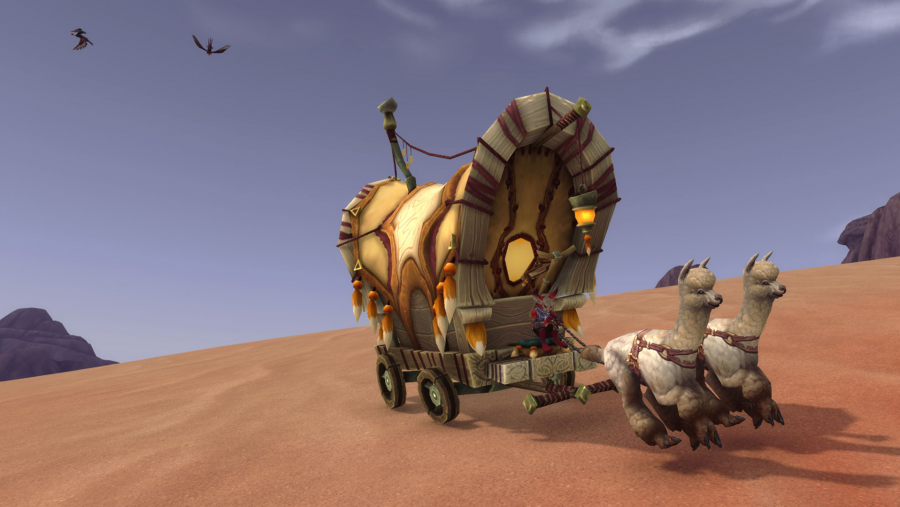Our Verdict
Battle for Azeroth is a solid follow-up to Legion that'll keep fans happy - if only for the new continents, War mode, and dungeons. Time will tell if the rest of the features will give the expansion the shelf life it needs.
It’s a testament to the longevity of World of Warcraft that Battle for Azeroth, the game’s seventh expansion as it enters its 15th year, manages to be a difficult second album. Legion changed the game – some might say saved the game – and began a new era of higher expectations. Battle for Azeroth had to maintain that quality, build upon it, and, if it wasn’t too busy, tell a story to follow up the most significant victory Azeroth’s champions had ever managed. Blizzard was up to some, but not all, of those challenges.
It’s extremely weird to live in a world where people – real people – care so much about the lore of World of Warcraft that it’s become worth writing about in its own right. Weirder still that anyone would be driven to begin a review by mentioning it. Whether you consider Battle for Azeroth’s narrative direction tantamount to the murder of Sylvanas’s character and the Horde’s honour, or see it more as a realistic telling of flawed people in conflict, Blizzard’s build-up to the reignition of its world war received more attention than anything the story has done since the fall of the Lich King.
The team carried that into Battle for Azeroth’s two faction-specific continents with the best voice acting and in-game cinematics WoW has ever had. Whether it’s down to advances in technology or money invested in voice actors and directors, every new character or returning hero looks and sounds great – a makeover notable enough to feel like a real next-level moment for the storytelling. Tying them together are zones with interesting and unique problems, all lightly linked by the ongoing war storyline and soon-to-be major threat of yet another ancient evil.
It’s that dual storyline where Battle for Azeroth first diverges. Each continent is packed with intriguing quests – the witch-blighted forest of Drustvar and gorgeous dunes of Vol’dun are home to my personal favourites – but there’s less overall cohesion than in Legion. While that expansion’s neverending tide of green sludge and underdressed six-armed demon-women became quickly fatiguing, every challenging situation in Legion was tied together by that singular antagonist – the big bad was here, and needed to be defeated. In Battle for Azeroth, the problems of Kul Tiras are broadly down to marauding pirates, witches, and squid-faced (un)holy men, not the Horde that is supposedly such a threat and in a state of open warfare.
What is it good for?
That angle is covered by the War Campaign; a series of questlines that are introduced as you adventure, taking you to the opposing faction’s zones to establish forward bases, scout, assassinate, and generally make a nuisance of yourself. They’re decent fun, and have an espionage flavour to them that WoW hasn’t featured before, but feel oddly lacking. They’re some of the only important quests in the expansion that aren’t dripping in fantastic voice acting, characterised instead by text-filled speech bubbles, which pop up and feel decidedly out of date next to the story events elsewhere.
More notably, there’s no point at which your War Campaign actually intersects with the enemy’s. My targets on the Alliance side aren’t allies on the Horde side, but mostly caricatured, cackling, magic vampires. In turn, I never know anything about what the reds get up to in their War Campaign, despite the fact they apparently assaulted my new capital and desecrated some tombs. Were it not for some random wandering, I wouldn’t even know where the Horde footholds on my continent are – they simply exist, and I can do nothing about it. Hell, half my quests on the opposing continent are to take out the mutual enemies of both factions, or helping the lovable-but-decidedly-neutral race of turtle-people to reach water. It’s a surprising disconnect in a PvE-focused, casual-friendly game like World of Warcraft, which has made its central storyline one that pits the two factions of players against each other.
Blizzard’s attempt to tackle that dichotomy is War Mode. Doing away with the archaic idea of PvP and PvE servers, everyone simply sets a toggle while in their capital city. Bonuses are given to those that decide to take part in the war, to make up for the additional difficulty that comes from being ganked every so often, and various other PvP incentives are in place.
It’s brilliant – when it works. The bonuses are enough that the majority of players turned War Mode on for their everyday activities early on. Outside of a few aggressors, most Horde and Alliance players approach each other cautiously, trying to go about their quests without engaging, knowing that starting a fight can descend an entire area into an all-out battle for hours on end. Marking particularly murderous foes on the map, and giving big rewards for taking them down, is a masterstroke – a continuous bait for the ambitious, as well as a warning that death-averse players are probably better off avoiding certain areas.
The War Campaign feels truly dangerous to embark upon in this manner, most notably when an escort mission for a neutral faction paths through a dozen enemies. We eye each other warily, painfully aware of the many skeletons of players scattered around from previous skirmishes. Blizzard knew it was creating these moments, and the paths between questing hubs and placement of objectives are designed to make them rare, but impactful.
Unfortunately, the honeymoon period for the feature wears off at max level. It goes from a minor inconvenience to die, to one that holds back group activities from starting, delaying more than just yourself. I eventually turned it off simply because I couldn’t interact with allies that didn’t have it on, and every dungeon entrance was usually a killing field for one faction or the other. It simply stops being worth the effort as the rewards – currencies, rather than gear levels – become less relevant and the time wasted becomes more valuable.
To the heart of it
One problem here is how little I care about one of those currencies, the Azerite that fuels the Heart of Azeroth. A neckpiece received by every player in the opening moments of the story, it takes the place of the class-specific weapons of Legion – a second levelling system that will continue until the end of the expansion, drip-feeding new power from the Azerite that is the catch-all reward for every max-level activity. That power is tied to three pieces of Azerite armour that unlock special new traits at certain thresholds.
The difference between the two is one of constant improvement versus meaningful impact over longer time periods. Legion’s artifacts gave you a point to spend at every level up, the vast majority of which went into very minor upgrades. But when my Heart of Azeroth reaches level 20, effectively nothing happens, but at level 21 it unlocks two new, noticeable traits. It parallels the still-controversial talent changes between Cataclysm and Mists of Pandaria.
It takes several days of normal play to get your Heart of Azeroth up a rank – a frustrating process on the occasions that no reward is forthcoming. Those thresholds and the traits they unlock also change based on which pieces of Azerite gear you happen to have, and there are massive differences in the deltas between the choices for each class and spec. Choosing between them simply isn’t as fun as striving towards completion of Legion’s artifact tree, and they certainly aren’t as impactful for general gameplay as the ludicrously overpowered legendaries, or the gameplay-defining talent trees of our characters.
It’s in this way that Battle for Azeroth’s new features struggle under the weight of expectation. Blizzard’s evolution of the artifact system introduces as many problems as it solves. World quests and their ties to endgame reputation grinds are still vital to keeping players engaged, but are simply no longer a new system. Exploring the world to find chests and secret enemies – which felt so fresh when it was introduced in Warlords of Draenor – no longer seems special, and the minimal rewards match the effort you need to expend to attain them. Major gameplay changes that pruned abilities and slowed down combat were likely needed for the overall health of the game, but where it’s Blizzard’s job to be aware this sucks but is necessary, it’s mine to say it may be necessary but it sucks.
The brand new Island Expeditions were given top billing in the early marketing, but are mostly pushed to the side in the final product, only appearing as a weekly quest. While undoubtedly an interesting use of procedural generation within WoW, they don’t feel particularly rewarding in play, and the much-touted random layouts and new AI for the opposing team of three often just feel samey and frustrating to fight. As a once-a-week activity they’re fine, but I don’t see myself ever choosing to do them over a dungeon, raid, or one of WoW’s other well-established uses of time. This leaves Battle for Azeroth, much like those dungeon bosses, feeling like it’s missing something.
dungeons plus
Tying all of this together is a theme of Blizzard time-gating content, either literally or behind reputation gains, or other forms of grinding. Some of this is long established – waiting three weeks for the raid, another week for its hardest difficulty, limiting dungeon rewards over that time too. That was already a fine line between allowing for a natural curve of play while introducing regular new content and feeling like the game eventually, simply, didn’t want you to play any more. With the addition of Azerite traits that require a new currency grind to unlock the potential of your armour, the progression of your artifact also being locked behind reputation gains that have a limit per day, and a number of other frustrations, it’s crossed that threshold.
Nowhere is that epitomised more than in Warfronts. The system was activated soon after launch, at the same time as the raid. However, the interesting bit – the battle for Stormgarde – only became available more recently, and then only for the Horde faction, after they gathered enough resources to begin it. Alliance will need to wait their turn, after a week-long cooldown, and then their own resource gathering effort. In the end, this means ten or so days of watching bars go up and down while being given the most basic of kill-so-many-somethings quests, all to get access to a single, not particularly long event. Once we’re mid-expansion, and it’s just another piece of content that pops up every so often, that might be ok – but as the first time this system is available in a new expansion, the wait is simply too long, especially combined with everything else.
Thankfully, dungeons remain a highlight of WoW, and Battle for Azeroth’s designs are as good as ever. The majority of the new dungeons are brilliant, with bosses as varied and entertaining as they’ve always been, placed in smart layouts that encourage experimentation and discovery. Legion’s infinitely scaling Mythic+ system, easily the game’s most successful new feature in years, returns in much the same form, with but a few tweaks. The ‘base’ versions of the dungeons suffer a little because of this, feeling vanilla and uncomplicated when you aren’t pushing your group’s capabilities with a particularly difficult challenge. But that was clearly a conscious choice on Blizzard’s part – to try to make the M+ system a smoother ride, limiting initial complexity so additional problems don’t complicate too much.
The system itself returns in much the same form as its previous iteration, with a few minor changes. Your first keystone now adds the upgrade that was originally reserved for only the highest level keystones rather than a small, percentage-based damage and health upgrade for enemies. At that highest level there is now a long-term rotation in place, where each season – usually tied to a major patch – will have a different challenge. This is a nod to the surprisingly popular esports scene that grew around M+, and a great change all around. Broadly, the different challenges still stray between fun and frustrating, but for a system that’s meant to push you until you fail, that’s acceptable and successful.
The raid, too, is a triumph on every axis. Uldir is a tour de force of interesting mechanics, varied designs, and challenge. No boss or area feels underutilised, trash mobs don’t overstay their welcome (except on Zul, ho boy), and visual design varies and flows throughout. The final boss, G’huun, is a complex encounter that is proving difficult even for the best of the best. Legion’s first raid was widely regarded as far too easy, while Uldir will give something to do to every member of a group, in a way that most expansions don’t in their earliest content. This will be particularly fascinating this go-round, as Method, the defacto best guild in the world, has announced it’ll stream its attempts to be the first to defeat the raid on its hardest difficulty – the premiere of the World First Race on Twitch.
after hours
That’s the state of Battle for Azeroth currently, but it’s worth noting in this world of games as a service that many of Legion’s finest moments came in its patches: the fantastic Return to Karazhan; the surprise three-boss Trial of Valor raid; an entire single-player storyline in the Deaths of Chromie; endless fantastic cinematics. Even Allied Races, ostensibly a Battle for Azeroth feature, popped up right at the end. Blizzard has that content loop locked in tight now, and though we know far less about 8.1 than we knew about 7.1 in the same timeframe, that suggests to me a confidence in their new procedure – which they will need after an uncharacteristic raft of bugs over the first month of Battle for Azeroth.
Then, of course, there’s the plot. It’s the most exciting time in ten years to care about the inhabitants of Azeroth, and though every player and all their alts know the Old Gods will be involved, exactly how Blizzard tells it – and who or what falls to corruption this time – is an exciting prospect. But it needs to be a surprise, as the Burning of Teldrassil, the attack on Argus, and the return of Illidan were before.
World of Warcraft still has that first hundred hours of an expansion on lock. Learning a new land, enjoying a new story, exploring dungeons and gearing up, and finding the little secrets and changes that keep the game feeling fresh. Battle for Azeroth does that as well as ever, with best-in-class music to go alongside everything else mentioned above. But while Battle for Azeroth has less to prove – and it feels impossible at this point, thanks to the many changes made since, that the game could ever reach as low a point as Warlords of Draenor again – it has even more to live up to. Hopefully, in time, it can.
